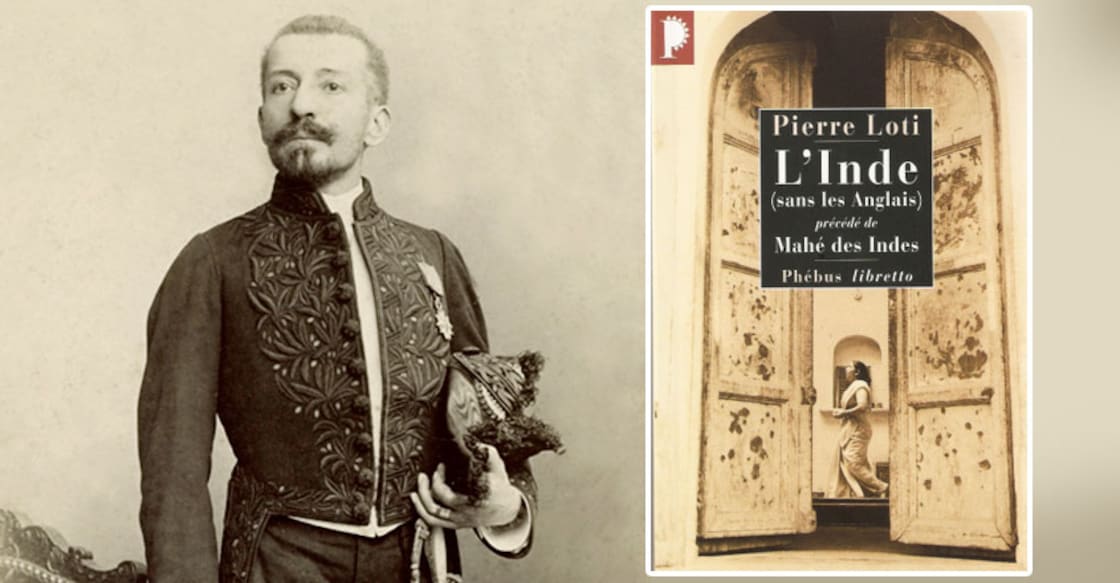How 19th-century Mahe charmed a French traveller

Mail This Article
Few countries in the world can compete with France when it comes to scholarship of Indology. Scholars such as Auguste Barth (1831-1916), Emile Senart (1847-1928) and Sylvain Levi (1863-1935) were Sanskrit experts and deeply passionate about the two great Indian religions, Hinduism and Buddhism.
Several 19th-century French scholars wanted the iconic École française d'Extrême-Orient (French School of the Far East) to be established in India, but eventually Saigon, which was one of the most important cities in French Indochina, received the honour. This clearly worked out for India’s greater good since Auguste Barth and George Coedes (1886-1969) conducted their research in Indochina and helped further establish the strong and historical links between India and Southeast Asia. Barth’s 'Sanskrit Inscriptions of Cambodia' and Coedes 'The Hinduised States of Indochina and Indonesia' are absolute treasures for those interested in the history of Asia.
While the great French Indologists helped quench Europe’s appetite for knowledge about ancient India, it was a French naval officer who gave the common people of France, a glimpse into the realities of India. Louis Marie-Julien Viaud (1850-1923), who wrote under the pseudonym of Pierre Loti, fell in love with a quiet and tiny part of northern Kerala that came under French rule -- Mahe.
Loti’s book 'Mahé des Indes' (Mahe of the Indies), which was written in 1886, is a love letter to this tiny part of Kerala. The following quotes from the book are my personal translation since I read the book in the original French and have not found an English translation.
Writing on January 1, 1886, under the “shade of palm trees,” Loti wrote: “Under this delightful shadow, it feels like I am in a garden of a fairy: unknown flowers, foliage as bright as flowers, purple, red, mottled with white and yellow, as though they were painted with pleasure."
Loti was a great novelist who travelled to Tahiti, Senegal, Turkey, China, Japan and Vietnam. He witnessed the Boxer Rebellion in Beijing and got glimpses of life in a closed Japan and seemed to totally enjoy himself in many of the countries he visited, but Mahe seemed to have a particular sense of allure for the Frenchman.
"The people we meet in these dark paths are all beautiful, calm, noble, with big velvet eyes - these eyes of India with the mysterious black charm," he wrote about Mahe. The great French philosopher Jean Grenier once said that it was by considering India an imaginary country that one gets closer to reality. Loti’s greatest success while writing 'Mahé des Indes' was implementing this idea.
The prevalent racial supremacist views of Europe at that time are missing in Loti’s writing. Of course, very few people in Kerala or most parts of India understood French at that time, so his work didn’t really reach the people he was writing about, but influential members of society such as the Maharaja of Travancore were informed about the writings of this French adventurer.
His interactions with the people of Mahe created such an impression that the French novelist looked at any kind of opening to be back in India. That opening finally came 14 years after he wrote his book about Mahe. In 1900, l'Académie française (the French Academy) tasked Loti with giving the Maharaja of Travancore a decoration.
He used this opportunity to travel across India for four months and write 'L'Inde sans les Anglais' (India without the English). In those four months he travelled to Madras, Hyderabad, Bombay, Jaipur, Udaipur, Agra, the Gangetic Plain, Calcutta and Puri, giving very vivid accounts of life in British India. He tried his best to avoid the colonisers and to interact with the masses of India.
Before his journey north from Kerala, Loti stayed in a beautiful house that was provided by the Maharaja in Thiruvananthapuram. “The house where I am given shelter looks at the beach, looks at the infinite, and here, in front of me, is the great blue sea, the Arabian Sea," Loti wrote, before describing Kerala, which even then seemed to stand out from other parts of India in many ways.
For those looking at travellers’ account of India without the condescension that was prevalent at that time, I would highly recommend the edition published by French publisher Phebus, which contains both 'Mahé des Indes' and 'L'Inde sans les Anglais'. Unfortunately I couldn’t find any English language translations of the books, but of course, there arises the question of us (with all due respect) looking beyond the Anglosphere. After all, many Malayalis have an incredible knack of mastering other languages. Why shouldn’t more of us start reading the works of great writers in the original? In a globalised world, we all need to think, act and be more global.


